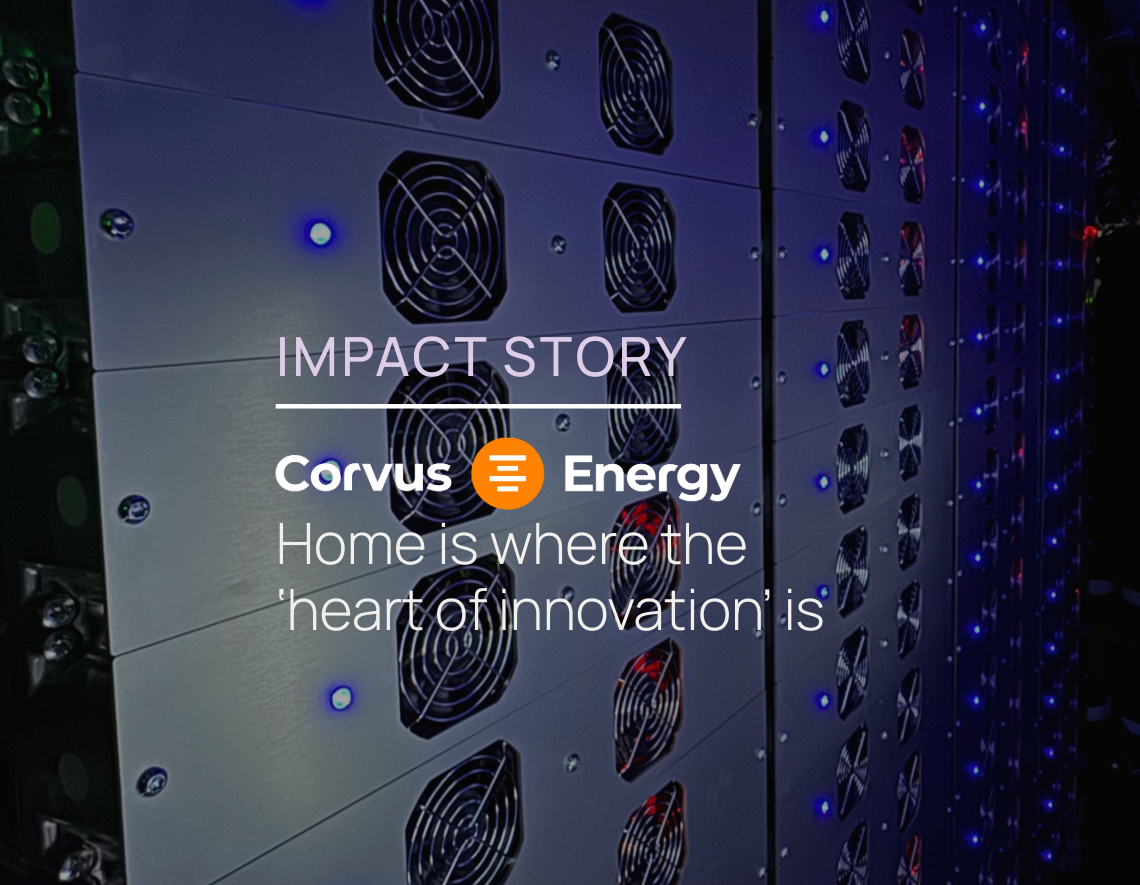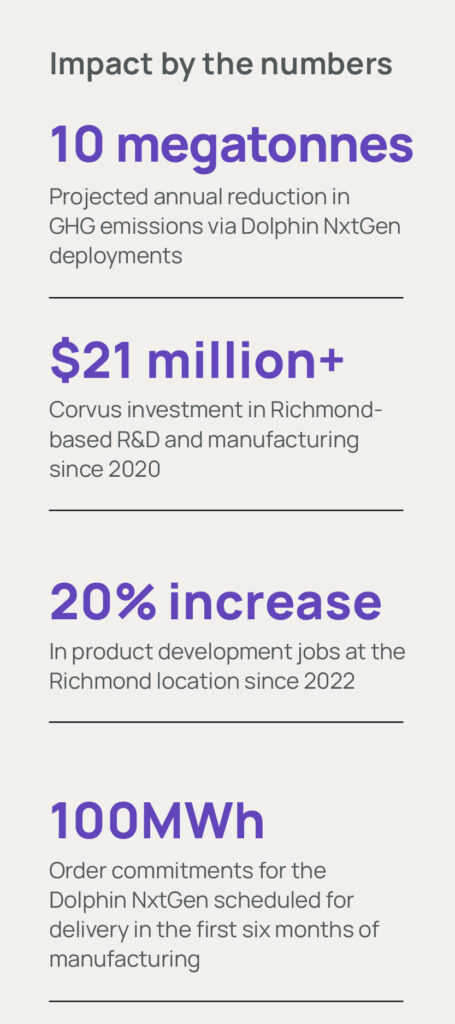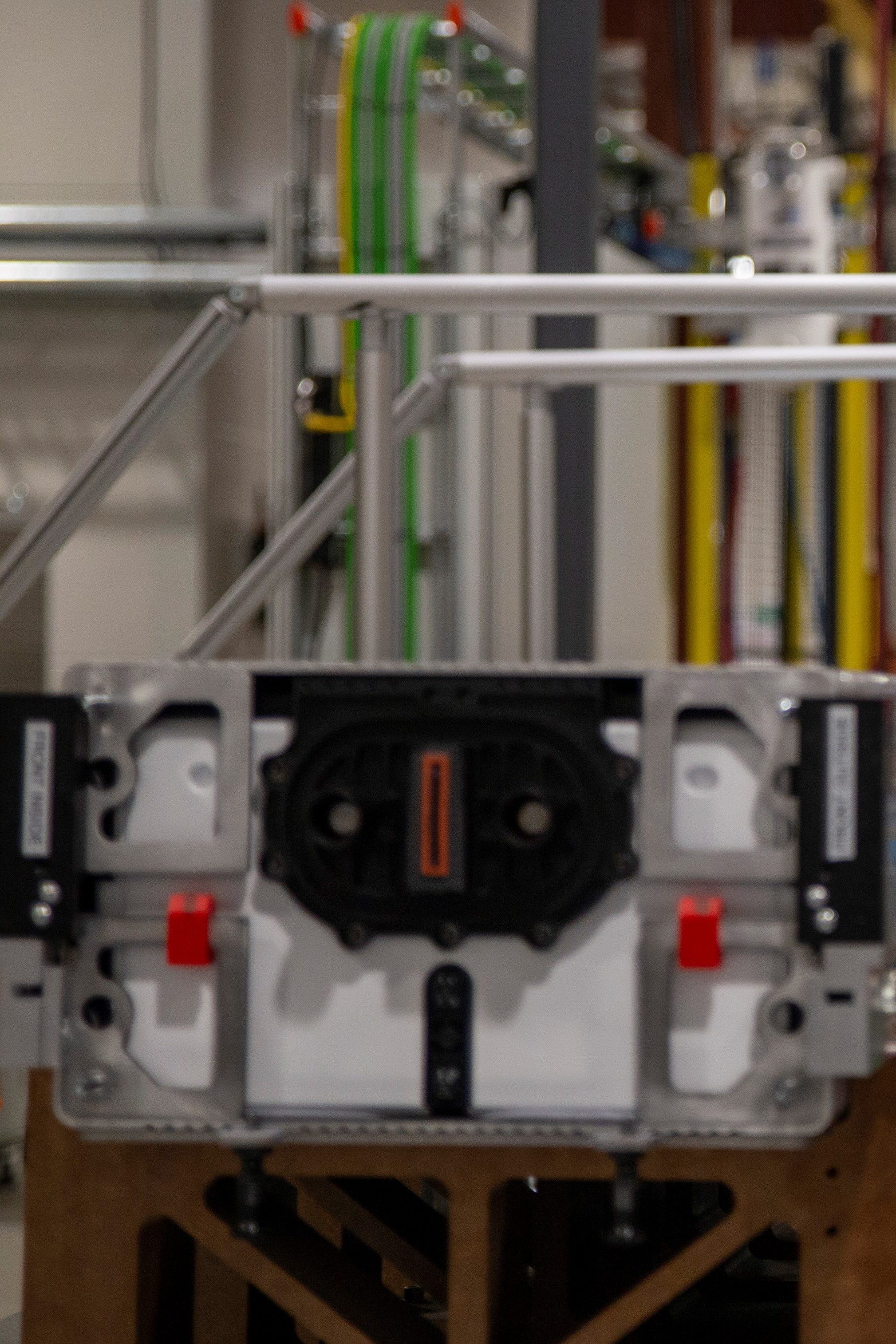

In the 15 years since it was founded out of a Richmond garage, Corvus Energy has expanded around the world: First to Norway, and then to the U.S., Singapore, Japan, and South Korea. But when it comes to its trailblazing maritime energy storage system (ESS) technology, its “heart of innovation,” as Director of Program Management Chris Waterman calls it, has stayed in Richmond.
“Our global HQ is now in Bergen, Norway, and a lot of our sales and customer-facing folks operate out of that office. But the building I’m sitting in right now houses the brain trust, and this is where all the ESS product development and technical work occurs. This is where B.C. innovation goes out to the rest of the world.”
A sea change in emissions reduction
As it stands, more than half of the world’s ESS-equipped maritime vessels have been outfitted with systems developed by the 50-member Richmond R&D team. Spanning 1,000 plus projects and 9 million operating hours, Corvus systems have already helped to save over 3.9 billion litres of diesel fuel and prevented 9.4 billion kilograms of carbon dioxide from being released. And counting: These reductions are so measurable and predictable that the CorvusEnergy.com homepage features a fast-spinning ticker that tracks greenhouse gas (GHG) reductions.
“Many operators see retrofitting and hybridizing their vessels as purely a business decision,” Waterman explains. “Our systems cut fuel consumption and maintenance costs, and extend the lifetime of machinery and equipment, by running engines at optimal loads and storing excess energy for later use. Operators get all the benefits of a hybrid craft without much disruption.”

Scaling innovation from B.C. to the world
Building on this remarkable momentum with the support of a $500,000 investment from the B.C. Centre for Innovation and Clean Energy (CICE), the Richmond team recently delivered Dolphin 2.0, the initial hardware version of the new Dolphin NxtGen battery ESS. Designed for speedy lightweight craft that require high-energy capacity — ferries, yachts, sightseeing vessels, and offshore wind turbine service boats, to name a few — this cutting-edge ESS upgrades the first generation of the Dolphin product line by incorporating a cylindrical battery cell similar to that used in Tesla vehicles.
It also integrates a new modular architecture and patented technologies for thermal management that reduce manufacturing costs, enable deployment in more compact spaces, and ensure that future Corvus products can quickly take advantage of higher ingress protection and other enhancements required to meet evolving industry standards and regulations.
Chris Waterman
Director of Program Management – Corvus EnergyThe right tech at the right time
With International Maritime Organization (IMO) regulations calling for a 40-percent reduction in industry GHG emissions by 2030, the 10-megatonne-a-year projected impact of the Dolphin NxtGen couldn’t come at a better time. Indeed, it has already been selected to power the world’s largest 100-percent electric lightweight Ro-Pax ferry. Providing the 2,100-passenger vessel with more than 41 megawatt hours (MWh) of energy storage, it will be four times as large as the largest battery ESS installation aboard a ship today.
Various deployments in B.C., meanwhile, are supporting the CleanBC initiative to electrify transportation, as well as other provincial and federal emissions-reduction goals. This includes Canada’s first all-electric harbour tugboat — the HaiSea Wamis, a Haisla Nation-Seaspan joint venture — and a hydrogen fuel cell crane in the Port of Vancouver that will become the first of its kind in the Americas when retrofitted in 2024.
Generating jobs for British Columbians
“Our order book for the Dolphin NxtGen is full for 2024 and 2025 is filling up quickly,” Waterman says, adding that order commitments of close to 100MWh are scheduled for delivery in the first six months of manufacturing. “These unprecedented sales are enabling us to expand our capacity to develop more and better next-generation maritime ESS products, and to diversify and deepen our technical expertise. This directly drives growth in jobs of all kinds, and in plant and production capacity here in B.C.”
With a state-of-the-art manufacturing facility also located in Richmond, “Corvus has become a place for innovative Canadians who care about cleantech, and who want to help to make the world a better place,” he adds.
The Corvus brain trust, it seems, also has plenty of heart.
